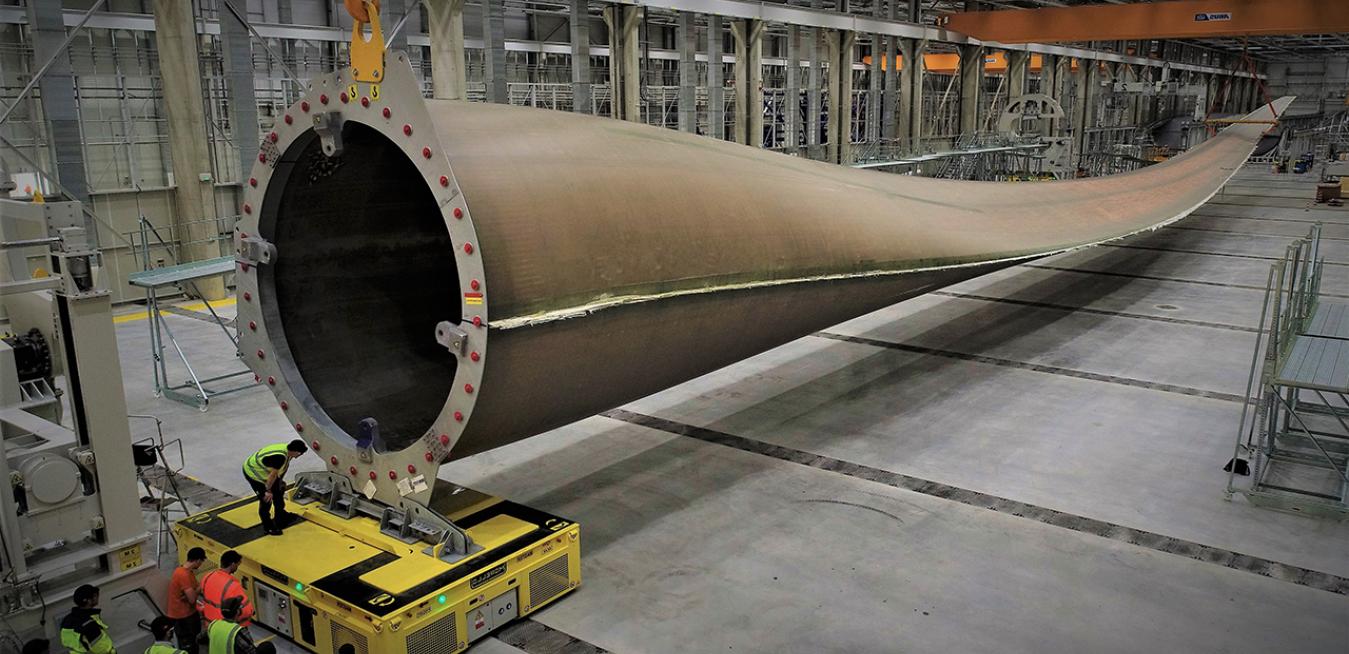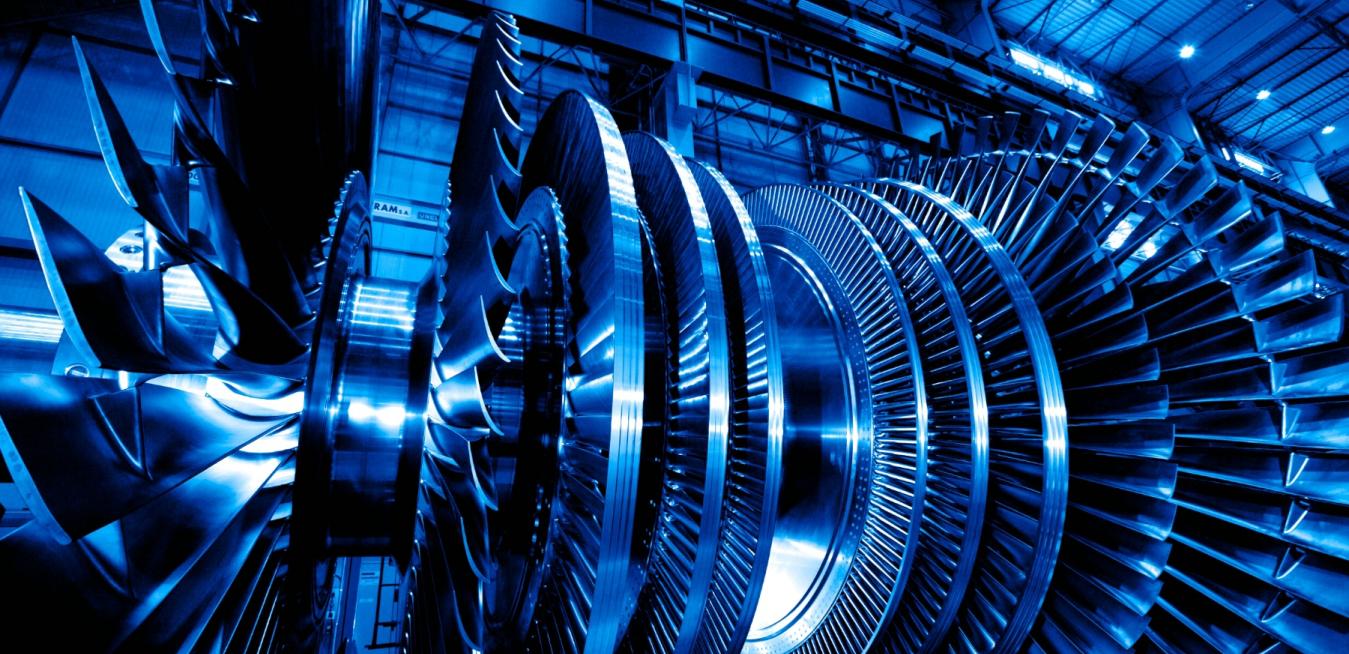GE’s Haliade-X offshore wind turbine was designed to evolve with the market, and evolve it has. The initial model produced 12 megawatts — and even at that level, a single rotation of the machine’s blades could generate enough power for one U.K. household for two days. But when GE Renewable Energy engineers tested a Haliade-X prototype, they found it could be optimized to produce 13 MW. Now an even more powerful version will be rated at 14 MW — and it’s that machine that’s just been selected for Dogger Bank C, the 1.2-gigawatt, third phase of the U.K.’s Dogger Bank wind farm.
A new GE plant in northeast England will make the world’s longest wind turbine blades to date. Measuring 107 meters from tip to root, the blades are a key component of GE’s Haliade-X, the most powerful offshore wind turbine in operation.
Sitting in the shadow of a 10th-century Saxon castle and surrounded by emerald fields flecked with herds of grazing sheep and cattle, the English Midlands town of Stafford feels far removed from the hustle and bustle of Manchester, a cradle of the Industrial Revolution just an hour to the north.
Lucca, a sandy-colored, 1-year-old shih tzu, is undeniably cute — thanks in part to the tiny legs he trots about on. But one of those legs was also a source of potentially lifelong discomfort for the pup. Lucca grew up with a deformed lower leg, a condition often found in smaller dogs, including shih tzus and dachshunds: Two bones in his front right leg developed at different rates. When one stopped growing prematurely, it acted like a bow string, causing the other to twist and bend.
Mark Sheppard formed his first software company with a mate back in the ’80s. The two 14-year-olds growing up outside the city of Oxford in England, had programmed an adventure game and sold 15 copies—they were pretty happy!










